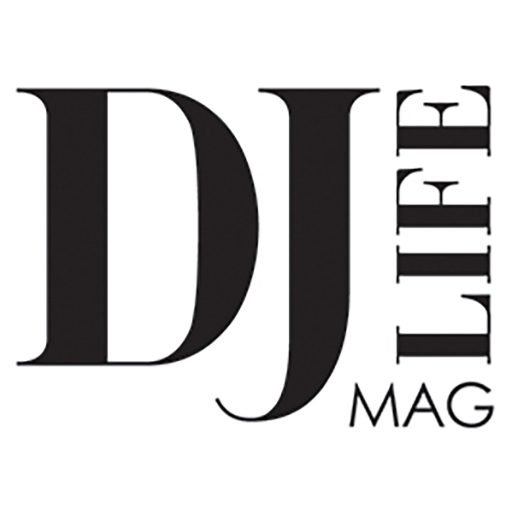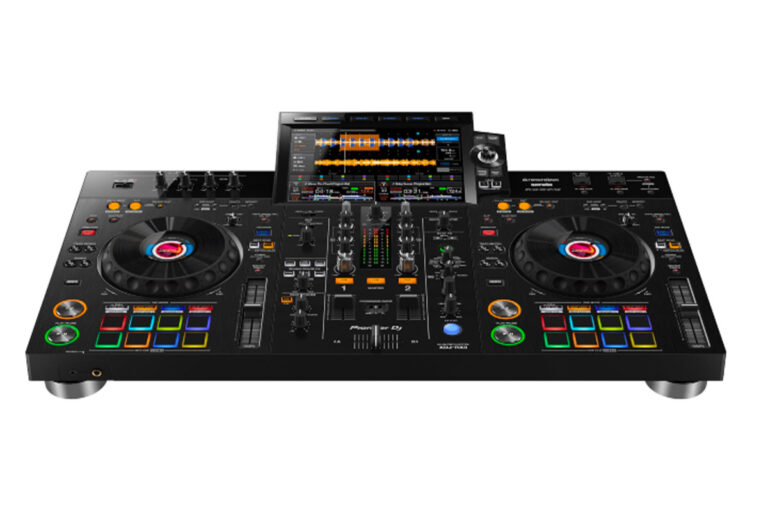For most DJs, the past couple of years have been pretty tough. But as pandemic restrictions continue to ease in most parts of the country and as the latest wave of COVID winds-down, I’m personally feeling a sense of optimism about what the remainder of 2022 might bring for us.
Perhaps that’s boosted a bit as I get the chance to go hands-on with some of the newest gear to hit the market, among them Pioneer DJ’s new XDJ-RX3 all-in-one controller — a replacement for its predecessor, the XDJ-RX2.
There continue to be myriad choices for DJs in terms of gear they could use to perform a set. Pioneer DJ, like its competitors, has been on a mission to continuously improve its offerings in what I call the “standalone” controller segment. Pioneer DJ prefers the term “all-in-one,” but it promises the option of DJ life without a laptop. Plug in some digital media full of tracks into the onboard USB ports, and you’re off.
It’s worth pointing out that most of these same controllers actually do support laptop-based DJing, for those who prefer it, and the Pioneer DJ XDJ-RX3 does exactly that, as a full-fledged Serato controller.
Pioneer DJ currently provides three offerings in this segment, from entry-level to flagship. The XDJ-RX3 fits in the middle of the line-up. The last time I played with a Pioneer DJ all-in-one, it was with what remains its flagship, four-channel model, the XDJ-XZ. While it was a nice controller, it was a bit of a beast, tipping the scales at nearly 30 pounds. The XDJ-RX3 provides many of the same capabilities, but thanks to dropping a couple of channels from the mixer, as well as some of the higher-end features, the XDJ-RX3 lands at right around 20 pounds, which makes a huge difference in terms of portability.
The roughly two years between the introduction of the two models has given the company plenty of time to revisit the design. For starters, the XDJ-RX3 sports an enormous 10.1-inch touchscreen (vs. the 7-inch of both the previous XDJ-RX2, as well as the flagship XDJ-XZ), and Pioneer DJ has spent a lot of time improving the operation of the underlying operating system as well. The display is gorgeous, responsive and fast. (According to the company, “the song’s load time [when a track has hot cues] has been improved from about 2.5-to-5 seconds on the XZ to under a second with eight hot cues on the RX3.”)
Like the company’s other all-in-ones, the XDJ-RX3 takes the majority of its ergonomic cues from Pioneer DJ’s industry-leading DJ media players and mixers. The approach is a smart one, as it reduces the learning curve considerably for experienced DJs accustomed to the company’s ubiquitous gear.
The company has built in a range of ways to get your music into the system. As mentioned earlier, you can connect digital mass storage devices to the pair of USB ports, and you can connect either CDJs, vinyl turntables, or other sources into back panel. A switch in the mixer section, one for each of the two channels, lets you pick the desired input. And as mentioned previously, the XDJ-RX3 is a full-blown Serato controller as well.
As with prior Pioneer DJ all-in-ones, the onboard music analysis of the XDJ-RX3 is limited solely to BPM (tempo). There is no real-time, onboard detection of song key, and full-color waveform displays are not available. To get these benefits, you’ll need to perform offboard track analysis and prep, using the company’s rekordbox software. While I understand the value of the approach in some ways, as I’ve said before, I would have preferred a bit more onboard intelligence in the unit, with no requirement for pre-processing. Perhaps this is why Pioneer DJ opts to use the term “all-in-one” rather than “standalone” to describe the XDJ-RX3 and its siblings.
Speaking of rekordbox, I’ve been a vocal critic of subscription-model software for DJs and producers, but that’s the business model that Pioneer DJ has chosen for the software. No matter how hard I try to see it any other way, monthly software subscriptions benefit only the software maker, and place an onerous financial burden on the user — often with questionable value and benefit. Pioneer DJ’s highest-end subscription is a whopping $30 per month, with tiers at $15 and $10 per month. Given the price of an XDJ-RX3, I would have expected better, frankly.
The controller does provide a so-called “hardware unlock” for rekordbox, which provides a handful of features from the paid-subscription tiers for free. Whether these are adequate for your needs depends on your use cases; the rekordbox website has a feature comparison available to help you decide.
(According to the company, “the only subscription features that are not unlocked by the RX3 are Lyric [which requires use of a computer], edit [which is again computer-centric], and lighting [which requires the RB-DMX box to function, and which unlocks Rekordbox lighting]. DVS is not supported on the controller, so even if it were unlocked it wouldn’t function. Point being, there isn’t any reason to pay unless you want to have the Dropbox functionality of our Creative and Professional plans.”)
In Use
One thing I’ve always liked about the gear from Pioneer DJ is the build quality, and it appears that the XDJ-RX3 follows in that tradition. Knobs, sliders and switches all have a solid feel with little to no “play,” providing confident operation. And the unit’s jog wheels — complete with color LCD center displays, new since the XDJ-RX2 — provide accurate control.
I do appreciate that the XDJ-RX3 offers a pair of microphone inputs, which I find essential during mobile gigs, in particular. Pioneer DJ has provided separate rotary level controls, and while a two-band EQ is provided for the mics as well, it’s just a single set of controls that apply to both mics, requiring that they be relatively closely matched.
I alluded to this above, but one thing I’ve observed in the past with Pioneer DJ all-in-one units is that the embedded software that drives the unit has left a bit to be desired. The company has clearly invested in making improvements. The touchscreen is highly responsive, and the user interface itself feels much more modern than previous iterations, and relatively intuitive as well. You can take advantage of niceties like track previews, so you can more easily find and verify the track you want to mix into, and the unit even provides a countdown timer, which is great for live-streaming or recording sets. It’s nice to see some focus on this area of the company’s otherwise excellent all-in-ones. Now if they’d just address the scope of functionality you could tap within the unit and eliminate the requirement to use rekordbox on a computer for library management in order to get full functionality out of the controller, they’d also eliminate any basis for criticism in the process.
(According to the company, “you can create playlists from your Tag List, and even set your newly created playlists to the favorites side bar under the ‘Playlist’ screen. You can also adjust your grids on-unit. So, while you need to analyze on the computer, you can do a lot of on-the-fly set preparation.)
Finally, Release FX mode deserves a mention. Release FX mode provides an interesting way to spice up a set by applying any of eight different special effects with the ability to release them and return to the track without losing the beat. You can use them to emphasize or break up a section of track, or to provide a more dramatic way to transition to another one.
I have to say, effects are Pioneer DJ’s “thing.” Beyond Release FX, you also get a wide array of Beat FX and Sound Color FX, both of which can be applied and controlled in various ways to provide incredible flexibility in tailoring your performance.
Conclusions
The Pioneer DJ XDJ-RX3 replaces the company’s XDJ-RX2 as its midrange, two-channel, all-in-one controller offering. With great build quality, improved onboard software, flexible inputs, and Serato compatibility, it’s a competent, great-sounding choice for both club and mobile use. And with a price right around the $2,000 mark, it’s going to win the hearts, minds and performances of a lot of professionals looking for their next serious DJ controller.
To check out more gear reviews, click here.


